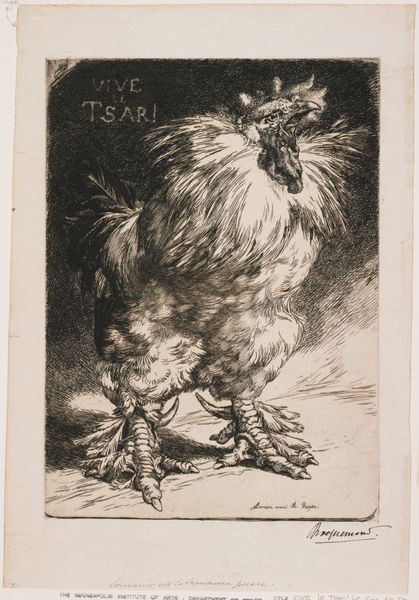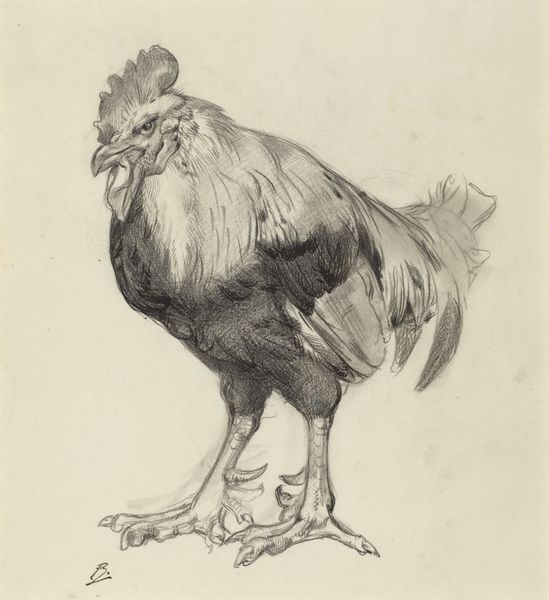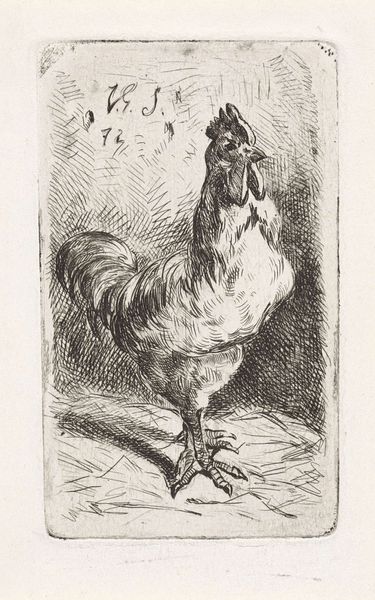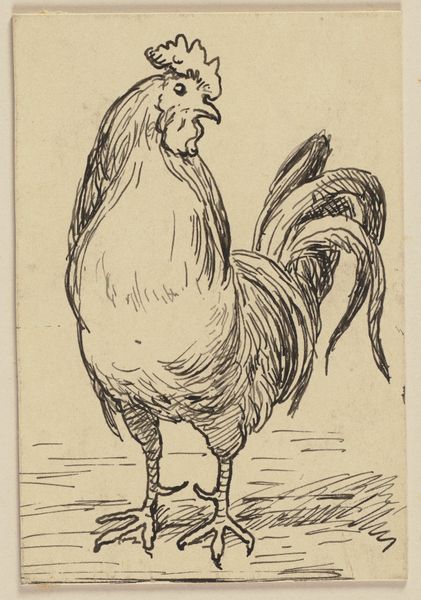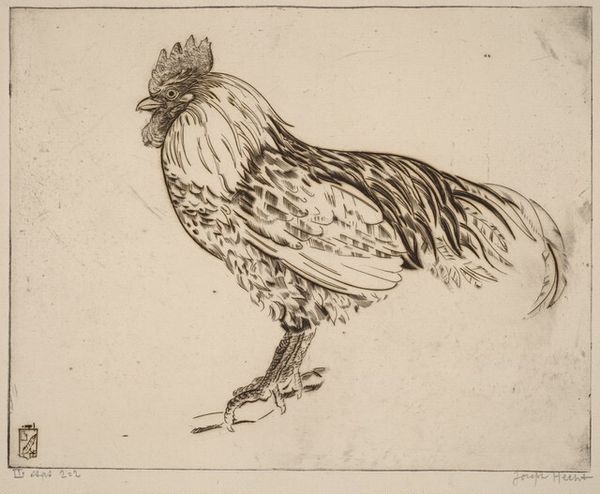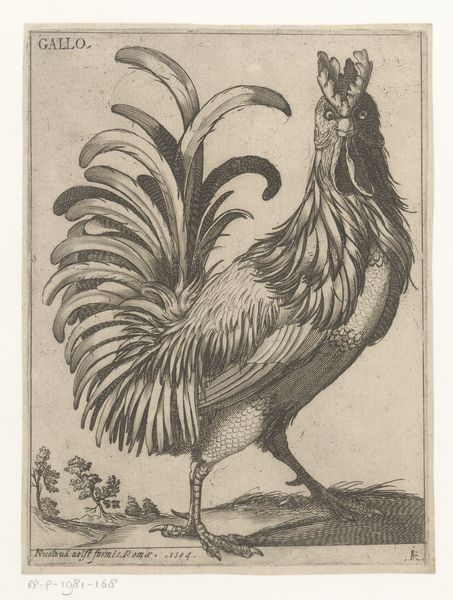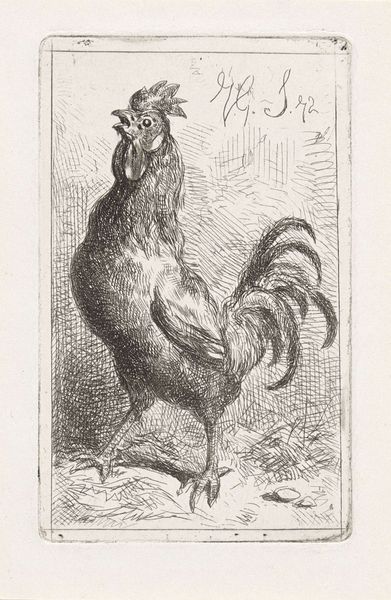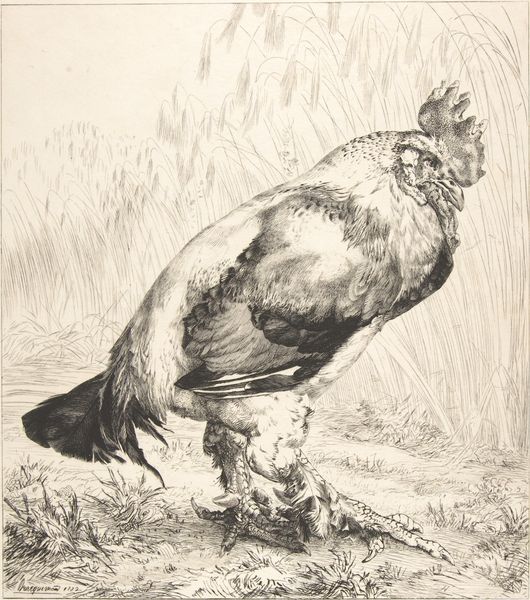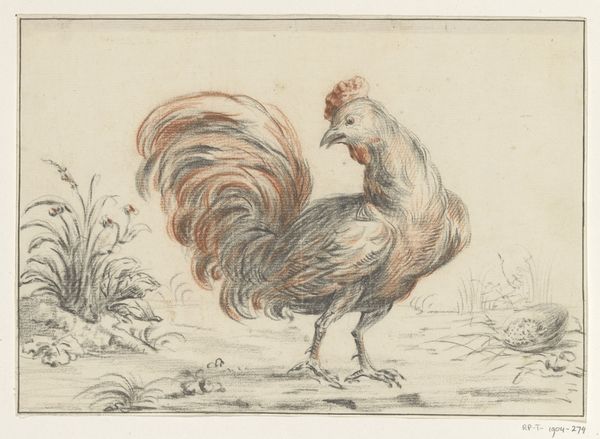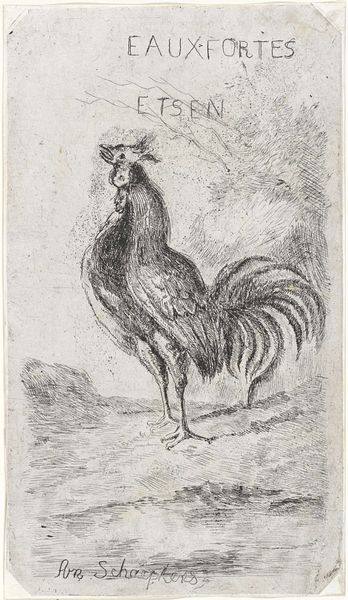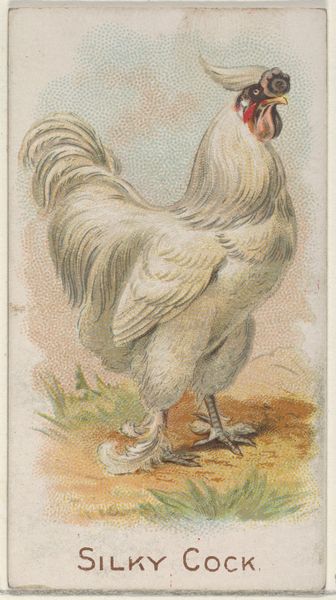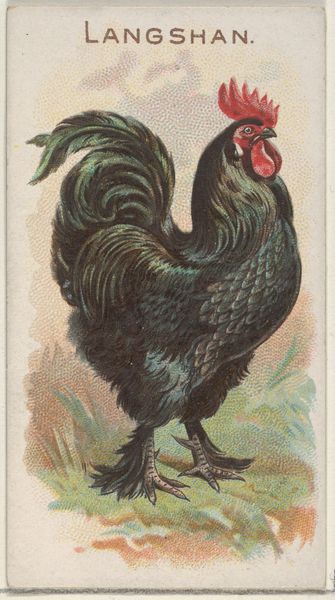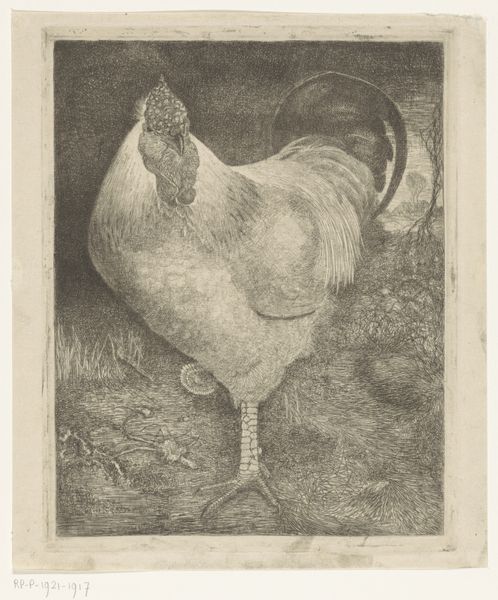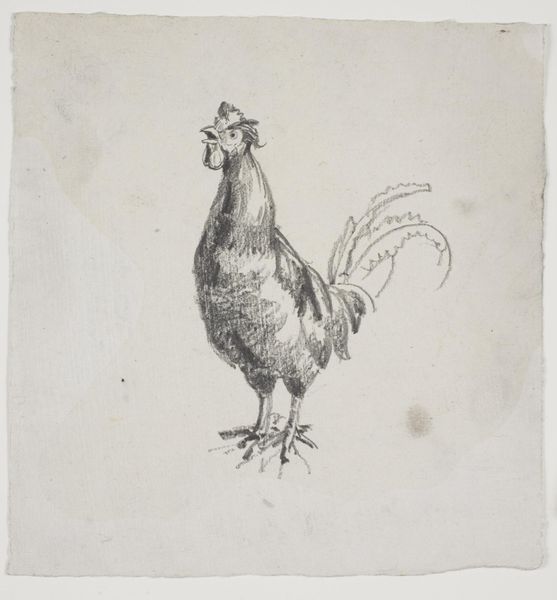
drawing, print, etching, paper
#
portrait
#
drawing
#
animal
# print
#
etching
#
paper
Dimensions: 330 × 228 mm (plate); 420 × 255 mm (sheet)
Copyright: Public Domain
Curator: Here we have Félix Bracquemond’s etching from 1893, "Long Live the Czar!" or "Vive le Tsar!" as the inscription indicates. Editor: My initial reaction? It’s unexpectedly… aggressive. That rooster fills the frame, confrontational in its stance and gaze. The stark blacks and whites add to the intensity. Curator: Indeed. Bracquemond produced this piece amidst the Franco-Russian Alliance of the 1890s. This alliance sought to counter the growing power of Germany. Editor: So, the rooster—traditionally a symbol of France—is essentially being presented as aligned with or perhaps even subservient to the Tsar. Interesting choice to equate France with, of all creatures, a barnyard animal. Curator: Precisely. It sparked quite a bit of controversy. Notice the sharp details of the etching: the texture of the feathers, the almost grotesque detail in the rooster’s face and claws. Editor: The high contrast amplifies that sense of unease. The way he uses the hatching technique to create depth and shadow really draws the eye. It feels very deliberate, from a technical perspective. Curator: Consider the date – 1893. An era rife with political maneuvering, propaganda, and burgeoning national identities. "Long Live the Czar!" becomes a satirical commentary on France’s position within this new world order. Editor: I see what you mean. What seems like a straightforward animal portrait morphs into this sharp political critique. Curator: Its technical excellence is undeniable, even as its subject challenges contemporary norms and alliances. Editor: Looking closely, I’m struck by the almost brutal honesty of the image and the artist’s commitment to such precise and effective detail, from the creature's comb to the spurs. A statement, no doubt. Curator: It reveals much about the complexities of the time and the artist's stance toward the then-current events.
Comments
No comments
Be the first to comment and join the conversation on the ultimate creative platform.
